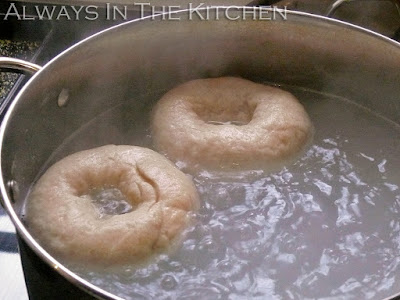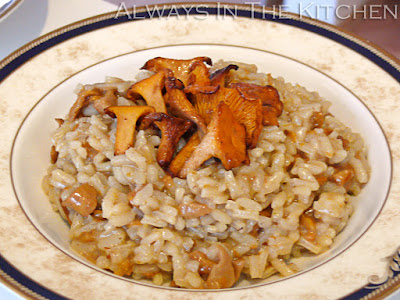
This delicious stew is built using my base model for meat stew: brown the meat well on at least two sides, braise the meat with onions for a good long time, add vegetables and cook until tender, season to taste.
We had this bread the first night with thick slices of rye bread from our bakery, but just about any kind of bread would be good with this. The remaining half-batch of stew was put into a freezer container to be pulled out later in the month when we're feeling particularly in need of an effortless, homemade meal. Depending on my energy level at the time, I might, or might not, decide to make biscuits or dumplings to go along with the stew.
In Germany, the supermarkets and farmers' markets have a pretty wonderful concept: Suppengrün. Literally translated, it means "Soup greens" and consists of a single bundle containing at least a wedge of celeriac, a few carrots, a section of leek, and some parsley. Some of them will have part carrots and part parsnips, and some of them will add a whole bundle of fresh herbs instead of just the parsley, but that's dependent on the individual character of the vendor. The basic version is always available, and is nicely sized for one pot of soup or stew. This is not only perfectly sized for small German fridges, but also helps keep food waste to a minimum. One package of Suppengrün just exactly what you need for a recipe without having to buy a whole bag of carrots, for example, or an enormous celery root or bunch that you might not be able to use up in time before it gets squishy in the vegetable drawer. It takes care of the crisper portion of the mirepoix in one item, and even the fancier ones are well priced. I hope this idea catches on worldwide.
Lamb & Guinness Stew
Serves 4 - 6, depending on sides
900 grams cubed lamb shoulder, lightly salted
1 tablespoon peanut oil (or other oil for frying)
1 large yellow onion, diced medium
1 small leek, white part only, thinly sliced
3 cloves garlic, minced
1 cup diced celeriac or 2 stalks of celery, diced
3 large carrots (or a mixture of carrots and parsnips)
2 large waxy potatoes
1 can or bottle of Guinness
2 cups lamb or beef broth or stock
3 bay leaves
1 tablespoon tomato paste
1 teaspoon Worcestershire sauce
1/4 teaspoon white pepper, ground
1/2 teaspoon yellow mustard seeds
2 tablespoons of all-purpose flour
1/2 cup water
Heat a dutch oven over medium-high heat, and when hot, add the oil. When the oil is also hot, add a sparse layer of lamb cubes, and allow to sear on one side, before turning to sear on a second side. Remove the lamb from the pan to a holding plate, and repeat until all of the lamb cubes are seared on two sides. Add the diced onion, the leek, the bay leaves, and the minced garlic to the fond in the empty pot, and add a little splash of water if necessary to prevent scorching. If you are using stalk celery instead of celeriac, add that now, too. Stir and scrape up the brown fond in the bottom of the pot, until the onions are starting to turn translucent. Add the tomato paste, and stir through again, being careful not to let it burn. Add the Worcestershire sauce, the mustard seeds, and the ground white pepper, and stir through.
Then, add the Guinness, and stir through, making sure to scrape up the bottom of the pot very thoroughly. Add the lamb or beef broth or stock (it's okay to use a good quality concentrate that you like the flavour of), and return the seared lamb to the pot. Simmer, covered at a low temperature for 1.5 hours, for meltingly tender lamb.
While the lamb simmers, prepare the remaining vegetables. Peel the carrots and cut them into large bite-sized chunks. Same for the potatoes. The celery root should be heavily peeled, and diced fairly small.
When the lamb is tender, combine the flour and the half cup of water in a small, sealable container, and shake vigorously (holding it shut the whole time) to make a smooth slurry. Pour it into the dutch oven and stir it through. It will not look very appealing, at first, and it won't do much to thicken the stew until it comes up to a full simmer, but it needs to go in now because it takes about a half-hour to cook out the raw taste of the flour.
Add the prepared vegetables, stir through, and bring up to a simmer again (the slurry and the cold vegetables will bring the temperature down very quickly). Turn the heat back down, cover the pot, and simmer for another 30 - 45 minutes (testing larger chunks of carrots for doneness seems to work well). Alternatively, you can put it (covered) in the oven at 350 F for the same amount of time.
Serve with a fat slice of bread, or a bun, or biscuits, or dumplings. Leftovers, should you be so lucky, keep nicely in a sealed container in the freezer for up to a month without loss of quality. Be sure to cool the stew thoroughly before freezing, for best textural results. I like to leave it in the fridge overnight, and then transfer it to the freezer in the morning.






















